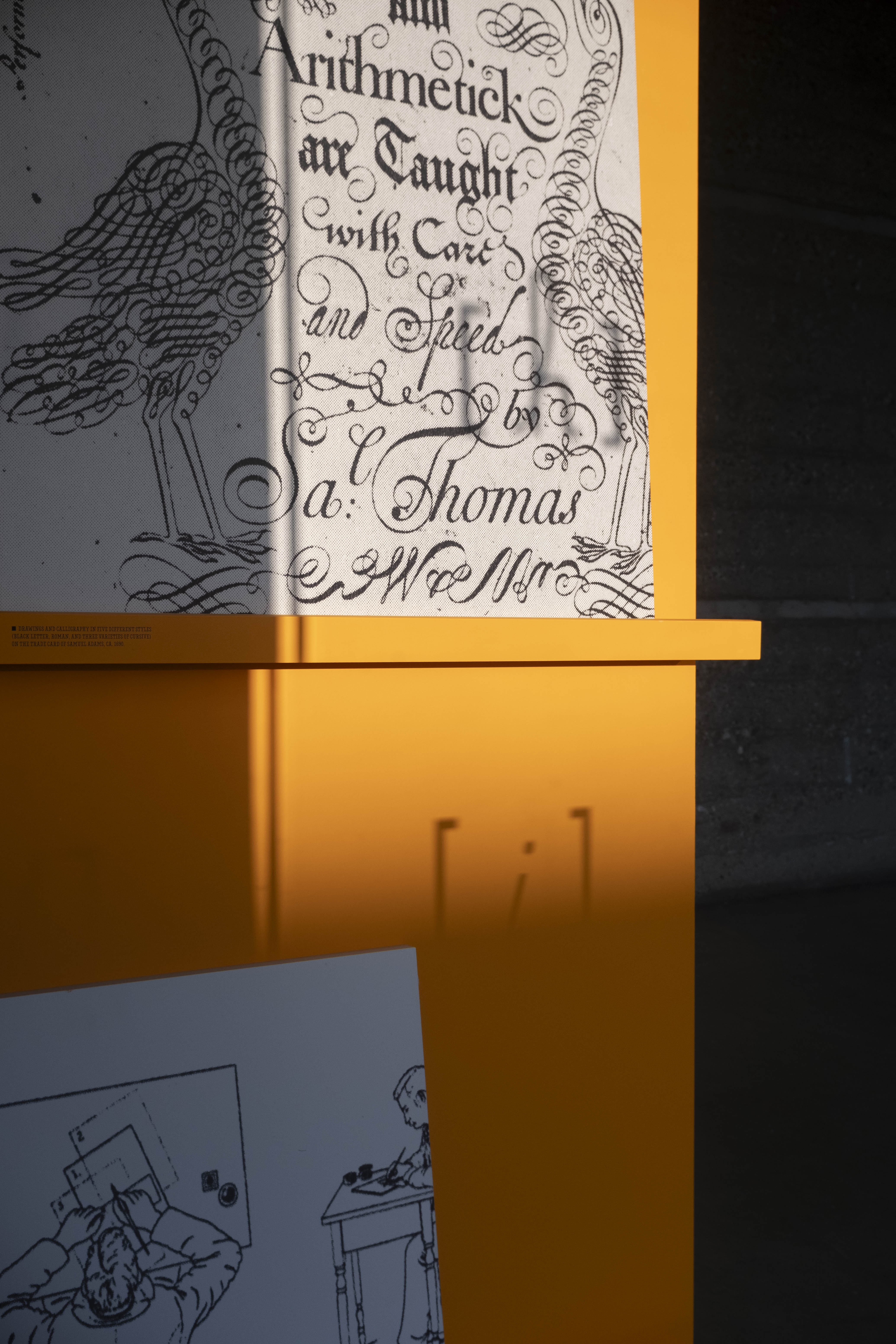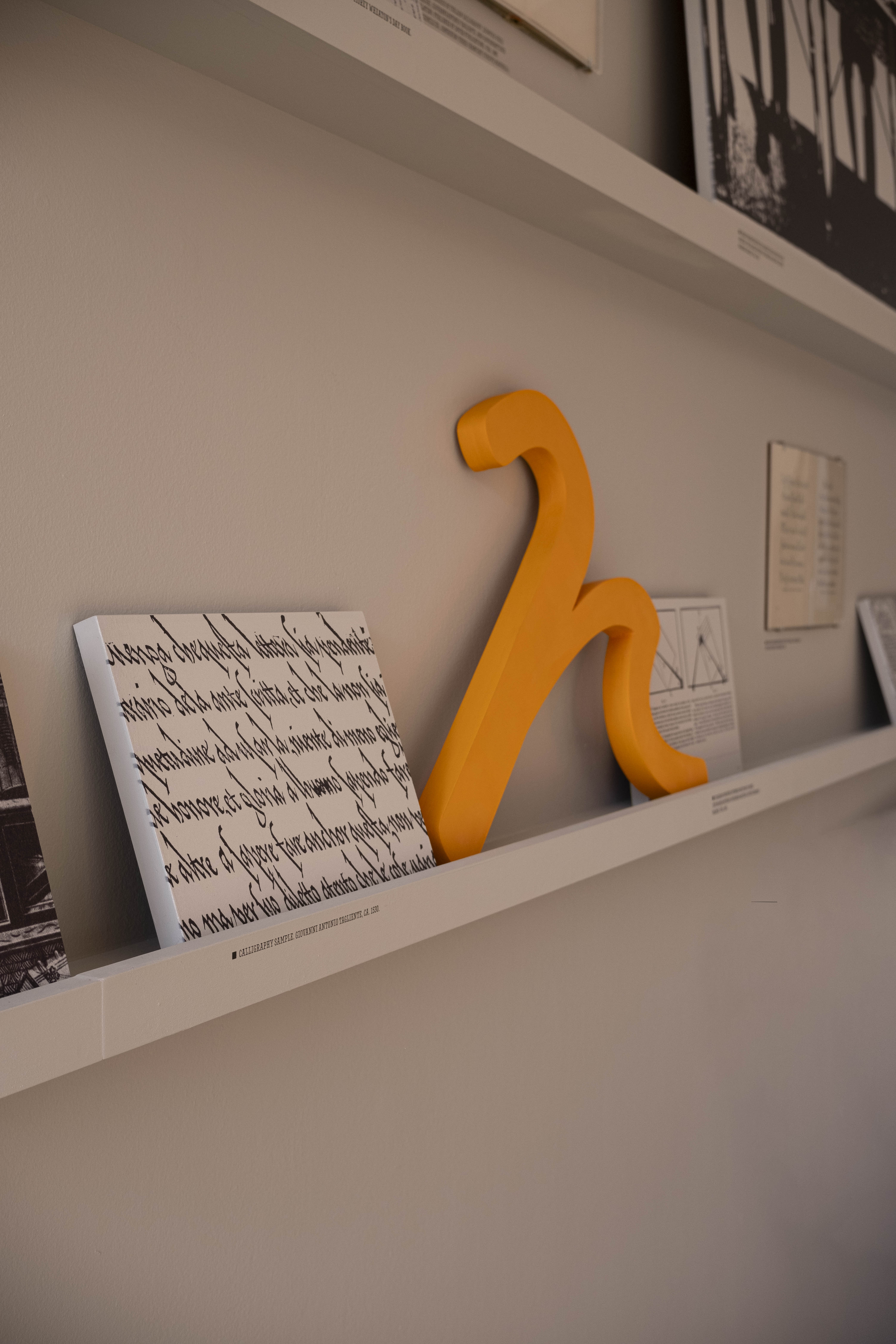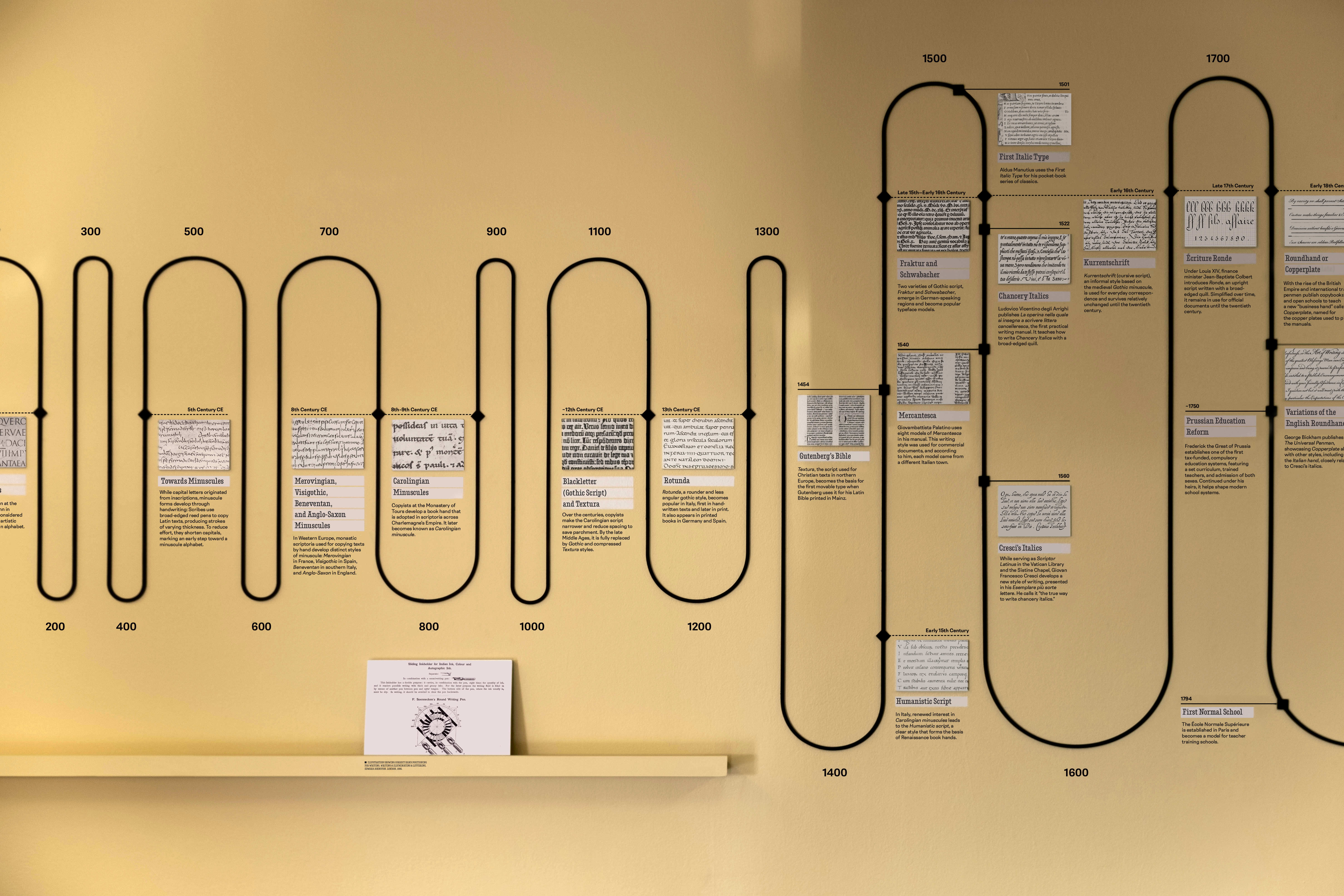Since early inscriptions, the Latin alphabet has spread across regions, woven into the written languages of many cultures around the world. While the basic character set remains relatively consistent, its letters have taken on new shapes as a result of the local influences of each new context. Primarium: A Case for Cursive traces this evolution through the lens of handwriting, mapping how cursive styles developed in different parts of the world, and the way they adapted to cultural shifts, technological advances, and pedagogical priorities. The exhibition resists framing cursive as a relic of the past and presents it as a living practice where digital tools can serve not as threats but as companions in sustaining its cultural and cognitive significance.
The trajectory of cursive writing is layered and complex—styles have overlapped, influenced one another, and at times even disappeared, only to reemerge elsewhere decades later. The exhibition embraces this non-linear nature and invites a similar mode of navigation where information may overlap or repeat across its three sections: “History” where information graphics offer different entry points into the development and historical contexts of writing styles; “Education,” which examines how handwriting is taught to children around the world, and “Typography,” which presents efforts to support cursive instruction through type design.
The exhibition is grounded in the work of Veronika Burian and José Scaglione (TypeTogether) and their long-term research project Primarium, which maps handwriting instruction for Latin-script learners in over 40 countries.
Exhibition design and curation: Lavinia Lascaris, Ximena Amaya
Exhibition intern: Averilyn Cummins
Student assistants: Vini Marques, Hailey Caress, Avi Sahni, Jay Lopez














